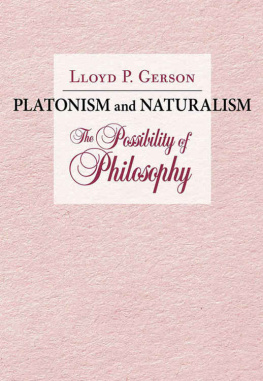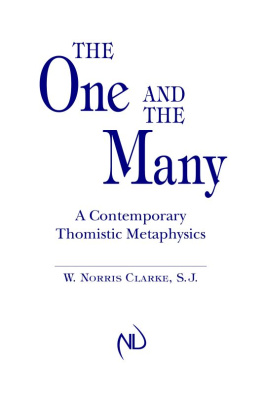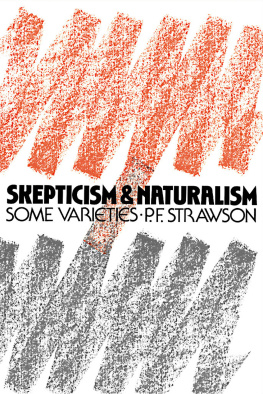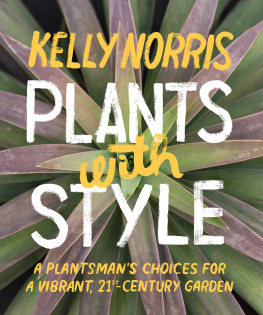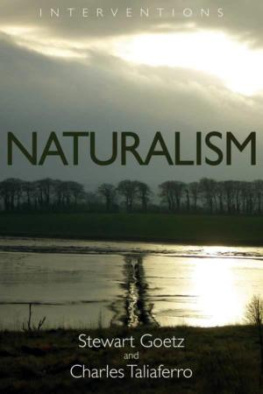Kelly D. Norris - New Naturalism
Here you can read online Kelly D. Norris - New Naturalism full text of the book (entire story) in english for free. Download pdf and epub, get meaning, cover and reviews about this ebook. year: 2021, publisher: Cool Springs Press, genre: Romance novel. Description of the work, (preface) as well as reviews are available. Best literature library LitArk.com created for fans of good reading and offers a wide selection of genres:
Romance novel
Science fiction
Adventure
Detective
Science
History
Home and family
Prose
Art
Politics
Computer
Non-fiction
Religion
Business
Children
Humor
Choose a favorite category and find really read worthwhile books. Enjoy immersion in the world of imagination, feel the emotions of the characters or learn something new for yourself, make an fascinating discovery.

- Book:New Naturalism
- Author:
- Publisher:Cool Springs Press
- Genre:
- Year:2021
- Rating:4 / 5
- Favourites:Add to favourites
- Your mark:
- 80
- 1
- 2
- 3
- 4
- 5
New Naturalism: summary, description and annotation
We offer to read an annotation, description, summary or preface (depends on what the author of the book "New Naturalism" wrote himself). If you haven't found the necessary information about the book — write in the comments, we will try to find it.
New Naturalism — read online for free the complete book (whole text) full work
Below is the text of the book, divided by pages. System saving the place of the last page read, allows you to conveniently read the book "New Naturalism" online for free, without having to search again every time where you left off. Put a bookmark, and you can go to the page where you finished reading at any time.
Font size:
Interval:
Bookmark:
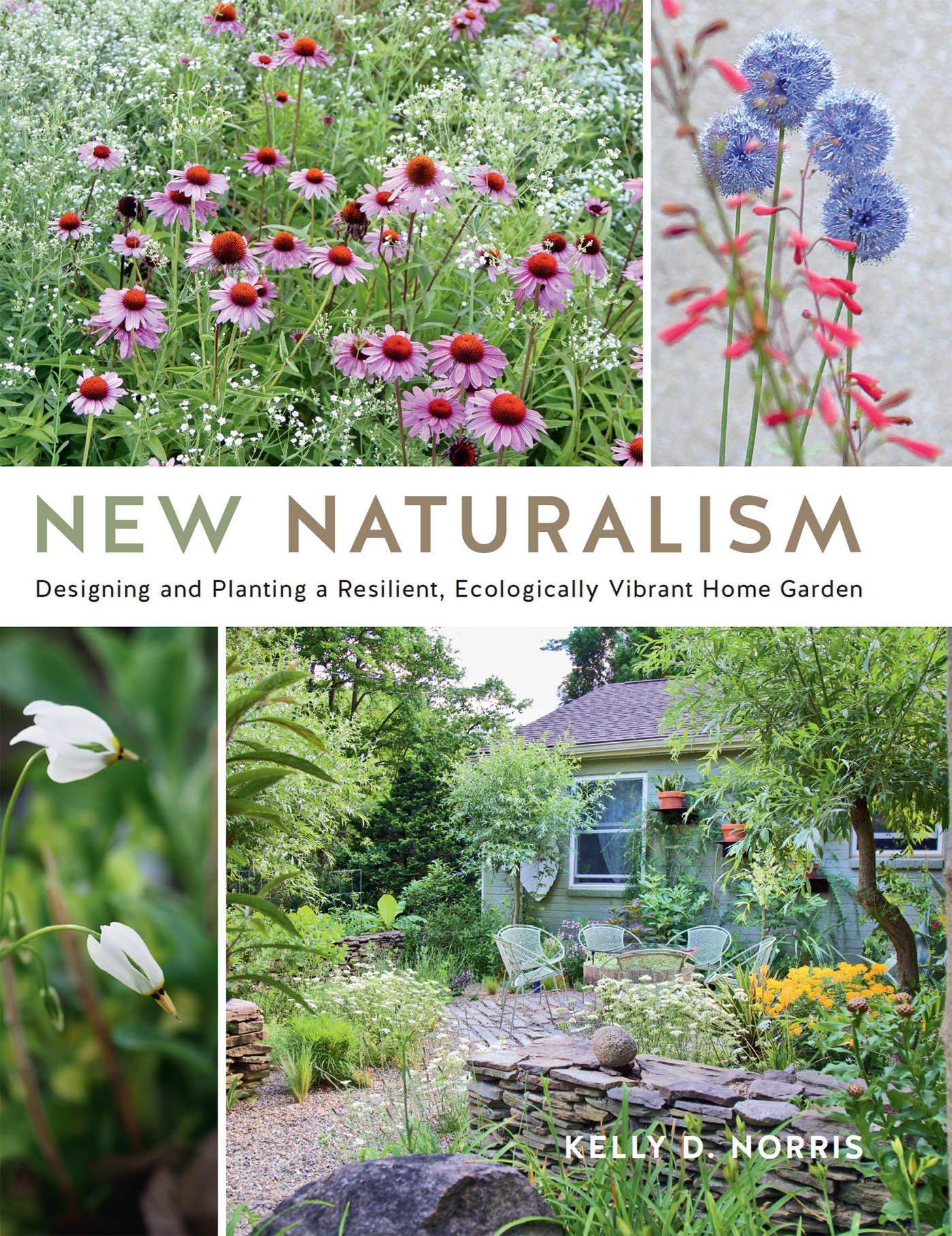

Designing and Planting a Resilient, Ecologically Vibrant Home Garden
KELLY D. NORRIS



First follow NATURE, and your judgment frame
By her just standard, which is still the same:
Unerring Nature, still divinely bright,
One clear, unchangd, and universal light,
Life, force, and beauty, must to all impart,
At once the source, and end, and test of art.
ALEXANDER POPE, from An Essay on Criticism
THE POET Alexander Pope might have given the world the soundest gardening advice when he penned First follow NATURE. Nature has had a seemingly uncomfortable association with gardening for centuries, even as gardeners have remained in earnest pursuit of naturalistic landscapes. Its a curious paradox. Traditional gardening, as practiced by self-espoused nature and outdoors lovers, has often led to strong preferences about the kinds of nature we welcome into the garden: butterflies are good but deer are bad. Weve not followed nature as much as weve tried to lead it.
I didnt encounter Popes words until my freshman year in college and didnt think much of it with respect to my gardening life until years later. When I did, I began to connect the dots. Around age 12, I professed a curiosity to explore a remnant, 40-acre tallgrass prairie next to my grandmothers farm, where I learned much about gardening against the backdrop of Iowas agricultural countryside. Growing up nearby, the wild roadsides of my rural upbringing proffered introductions to some of my oldest gardening friendsAquilegia canadensis (wild columbine) and Tradescantia bracteata (prairie spiderwort) are plants I still grow today. The neighborhood prairie might as well have been a botanical block party, even if it was only politely regarded by local farmers as a good source of late-season hay. Although I couldnt formulate the words for my feelings then, I realize that I was enchanted by observing plants in place, bearing witness to their wildness absent much in the way of human gestures. That prairie, which I fondly think of as my home prairie for all the good it did me growing up, was a harbinger of heritage and hope.
I got the chance to wander amid those tall stands of Sorghastrum nutans (Indiangrass) and occasional copses of Amorpha fruticosa (false indigo bush). In my wide-eyed pubescent years, I could have tracked my growth spurts standing tall against the gangly stems of Baptisia alba (white indigo). As a teenager, I came to know two federally threatened species that called that prairie home: Asclepias meadii (Meads milkweed) and Platanthera praeclara (western prairie fringed orchid). Those chance encounters with botanical treasures rewired my view of the natural world, cultivating a fascination with plants and place. In college I delved into that fascination with plants, their biology and ecology, their cultivation as elements of designed landscapes. Much of my writing and communication in those years dealt with the palette with which gardeners plant and seek to inspire readers to explore plants as much as grow them for whatever purpose. A deep, abiding understanding of plants remains the most fundamental plank in my horticultural practice today.
Lets be clearthis book is not merely some prairie boys plea to re-wild the planet, even if I entice your untamed notions. Wisecracking skeptics may deride the prairie as the poster child of wildness run astray with modern garden design. Perhaps it looks like that. For all the buzz about naturalistic planting, its easy to think that the best way to make a wilder landscape, both for looks and cause, would be to order a packet of wildflower seeds and simply dash across a tightly clipped lawn flinging hope and aspirations in protest to that underfoot. The only thing Ill protest is treating plants merely as static, colorful furnishings in the outdoor room; plants are characters with stories to tell.
Planting on the wild side is hands-in-the-dirt activism, my favorite act of gardening, as transactionally important as weeding but so much more gratifying. While I find some therapy in the latter, I delight in few things as much as the seminal act of committing plants and seeds to the ground. Planting in this way sets in motion the stories of plants as characters within the place you call home. Theres something magical and nearly alchemical about it all, a sort of wizardry that turns out right, even if its not quite as you imagined it. I hope you might begin to see your garden beyond merely a resource-intensive, two-dimensional art form and instead, as a self-perpetuating, three-dimensional life form.
However, if you read this book thinking that I might pronounce in some masterly way all there is to know about planting wilder gardens, youll be sorely disappointed. The book is not a profession of mastery, but rather the pursuit of it. Ive attempted to chock it full of opportunities and insights with the ultimate realization that the story will continue to grow and unfold. In that way, writing this book is less about pronouncements and rules, dos and donts. My goal is to inspire you to achieve something beautiful and functional. Gardens can be both reservoirs of ecological goodness, even merely interventions with the wild, and beautiful works of art.
None of this means youll need an ecology degree to make your way through the text. The book will demystify and unpack heady ecological concepts that will empower you to plant and experiment with confidence, all while appealing to a sense of style. Ive tried to keep much of the book as accessible as possible, even as I often wanted to dive deeper and unravel more complexity. I have no plans to drone on about the usual talking points without giving them context, considering their applications to gardens or rebutting them altogether. Natural sciences are messy, particularly when applied to something equally as messy as a landscape dominated by humans. We are part of the natural equation, not removed from it, if only wed acknowledge the opportunity to garden our backyards as slivers of the natural world. Think of all of this as an encouraging conversation between gardeners, if also occasional genial prodding. Through teaching and sharing these insights with diverse audiences over the last several years, I find that much of the science in the book comes alive with practice and observation and tends to reinforce things you might have already noticed while weeding. In reality, your garden is already closer to nature than you realize.
Recipes and good techniques matter. Just ask Julia Child. The masterwork that launched her fame effectively distilled the enormity of the French culinary genre into something demonstrable and achievable in the home kitchen. While the field of New Naturalism might not be as culturally integrated as a culinary tradition, its emergence as a nature-forward approach to making landscapes warrants some guide to help the everyday gardener make sense of it. This also provides the opportunity to redefine the culture in horticulture as a relationship
Font size:
Interval:
Bookmark:
Similar books «New Naturalism»
Look at similar books to New Naturalism. We have selected literature similar in name and meaning in the hope of providing readers with more options to find new, interesting, not yet read works.
Discussion, reviews of the book New Naturalism and just readers' own opinions. Leave your comments, write what you think about the work, its meaning or the main characters. Specify what exactly you liked and what you didn't like, and why you think so.

